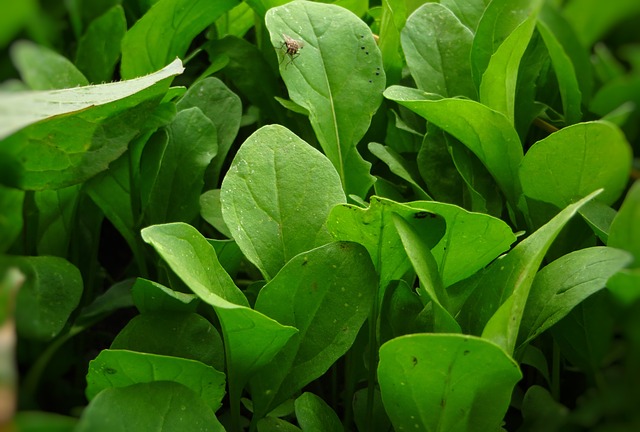
The warmth has returned for but a moment this week, though it definitely gets chilly throughout the night. As I slowly pull out spent crops from the garden, I’m still taking the time to pay attention to new seedlings poking through the earth. That’s right. Things are still growing in the garden! Even as fall approaches, there are crops thriving in the cool air. Plants that wilted and struggled in the heat of the summer are now happy as can be. Cabbage heads grow bigger and small greens are growing bigger each day. I planted seeds at the end of August in hopes for a small final harvest of the vegetables that I don’t often get to plant at the start of the season. Here, our spring is vicious and cold and by the time it heats up, it’s too late for things like spinach because the afternoon sun is unforgiving.
At this time of year, my focus narrows. Most of the garden is slowly put to bed and I bring my still-growing crops closer to the home. I move containers to my deck and focus my new plantings in my large raised bed right outside my kitchen. I have bok choy, spinach, kale, and arugula growing happily there. For some of you, there may still be ample time to sow a few seeds here and there. The key is choosing the right crops. A final sowing might seem like a bit of effort, but you’ll be thankful for the extra harvest for your dinner plate. Another chance to save on your grocery bill!
Important criteria for late plantings
Maturity date: Always always check the time to maturity for anything you plan to sow this late in the season. It’s pointless to plant seeds for rutabaga or cabbage, for instance. The weather may be ideal right now, but they won’t be able to grow quickly enough before your first frost date.
Weather forecast: Is a frost expected anytime soon? An early frost might be a problem for certain tender greens. Choose hardier varieties that can survive frost exposure if there’s any worry that a frost might arrive early.
First frost date: When is your first expected frost date? Once it gets cold enough, even the toughest of plants stop growing. You’ll need enough time between sowing and a frost to allow your plants to grow big enough for eating.
Manage Expectations
Mother Nature is unpredictable. Even if you’re early enough, an early frost might damage certain plantings and slow growth rates. Or, a sudden heat wave may stress your cool-season vegetables. Be ready for the unexpected and try not to take a loss too personally.
Best picks for late planting
Here are my top five suggestions for late planting. They’re an excellent option because they prefer cool weather, they’re quick to mature, they’re mostly problem-free, and they’re fairly cold hardy.
Arugula: Most varieties grow very quickly and thrive in cool weather.
Mesclun: Choose a winter blend if you’re planting late. Mesclun is a awesome choice for late planting because it’s often best when picked and eaten at the baby leaf stage.
Bok Choy: You’ll have fewer pest problems at the tail end of the season with this brassica crop and no issues with early bolting. Bok choy is also delicious when picked early.
Spinach: If you’re in zone 5 like me, you probably have plenty of trouble sowing spinach early enough in the spring to get a sizeable harvest. In the heat, spinach germinates practically already bolted. It grows quickly and leaves can be eaten at any size.
Radishes: Another quick-growing crop that tastes better when grown in cooler weather. The warmth often leads to pungent radishes. Even if you pick your radishes and discover an absence of bulbs, the tops can also be eaten.

Steph Coelho is a freelance writer gardening in zone 5b. She is a certified Square Foot Gardener and has taught various garden-related workshops. When she’s not digging in the dirt or writing, she’s cooking up fresh produce, running, or listening to her favorite podcasts.
Leave a Reply